This spring, InnoTech Alberta wrapped up a 4-year project that used remote camera arrays placed across Western and Northern Alberta to collect long-term data on a broad range of species to acquire insight into the impacts of development and recreation on wildlife. With over 250 camera locations, 4 arrays, and thousands camera images of a broad range of species, this project required a lot of days in the field for staff and students! One of the key intentions of the project was to assess how we can use camera-trap arrays to understand how wildlife changes its behaviour in relation to development and recreation pressures and wildlife management initiatives.
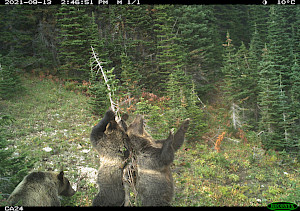
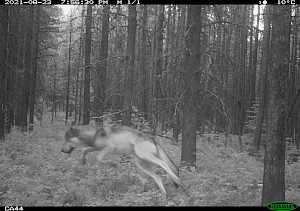
Innotech Alberta
The first study was completed by Gonçalo Curveira Santos, who focused on the impacts of development on mammal populations in the boreal forest, particularly on woodland caribou [Rangifer tarandus caribou]. We first collected data was collected on the main “players” in the mammal community (e.g., gray wolf [Canis lupus], moose [Alces alces], bear [Ursus sp.], Canada lynx [Lynx canadensis], snowshoe hare [Lepus americanus], and white-tailed deer [Odocoileus virginianus]). We then used this data to assess the impacts of disturbance on the use of different sites by predator and prey species, as well as their potential interactions. For instance, wolves’ use of certain locations might change in response to development; if their use increases, it may reduce the time bears spend in the area. These relationships quickly become complex and are further impacted by the fact that relationships appear to vary depending on the cumulative amount of disturbance.
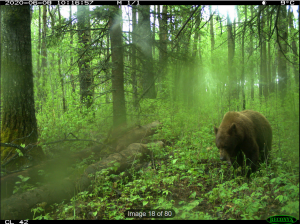
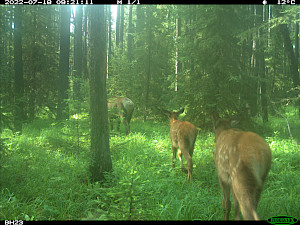
Innotech Alberta
This complexity indicates that wildlife managers should move beyond the narrow focus of threatened species (in this case, caribou) to consider the more complex effects that human disturbances may cause in boreal mammal communities. We believe that the best management strategies to pursue will vary depending on landscape conditions. The fact that there were more effects in the intermediately disturbed landscape suggests that context-dependent responses by wildlife necessitate different management actions in lower vs. higher disturbance areas.
The second study was by Solène Marion, who aimed to understand the impacts of recreation on wildlife site use in the eastern portion of the province. Recently, recreational use of many kinds has increased in this area, particularly since the start of the COVID-19 pandemic. While we found limited evidence for strong or consistent effects of recreation on mammal space use, rather, the interaction between recreation and other factors related to the local context (e.g. trail designation, forest cover). The strongest interaction was between trail density and management type, suggesting that limiting the density of trails may be necessary to reduce the negative impacts on mammals within conservation areas. This study also identified that it is essential to use multiple measures of recreation to have a fuller picture of the impact of human recreation.
Wildlife responses to recreation are complex, and so is the challenge of balancing recreation opportunities with wildlife conservation. It follows that an adaptive management approach that ensures coexistence between outdoor recreation and wildlife should consider multi-species monitoring across landscapes that vary in recreation pressure.
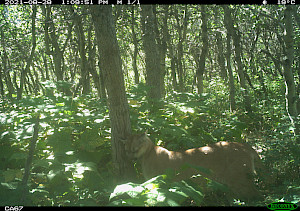
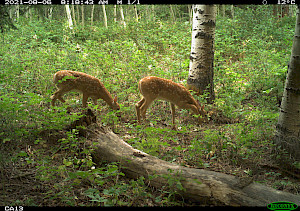
Innotech Alberta
The data collected in this project will be further leveraged by Alberta Environment and Protected Areas in wildlife monitoring work (e.g., wolverine) and by Erin Bayne (University of Alberta) in research looking at the opportunities of leveraging multiple sources of camera data to answer questions at broader geographic scales. We are also open to further use of the data we have collected to date.
Written by Emily Herdman, Supervisor, InnoTech Alberta (emily.herdman@innotechalberta.ca). Research was a collaboration with Cole Burton’s lab at the University of British Columbia (cole.burton@ubc.ca) and his postdocs at the time - Solène Marion (solene-marion@orange.fr) and Gonçalo Curveira Santos (gcurveirasantos@gmail.com).